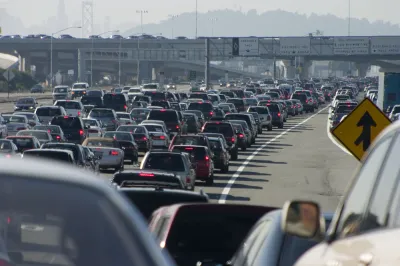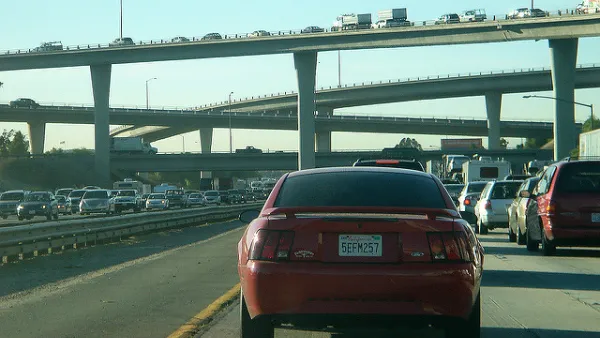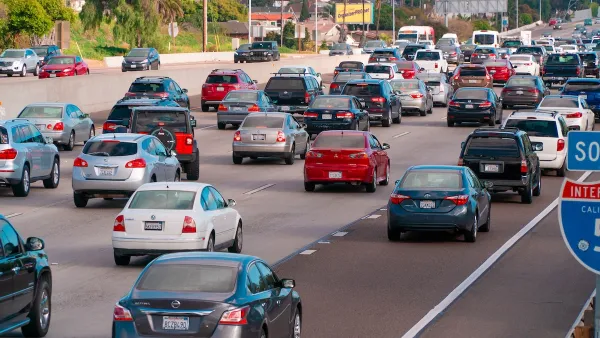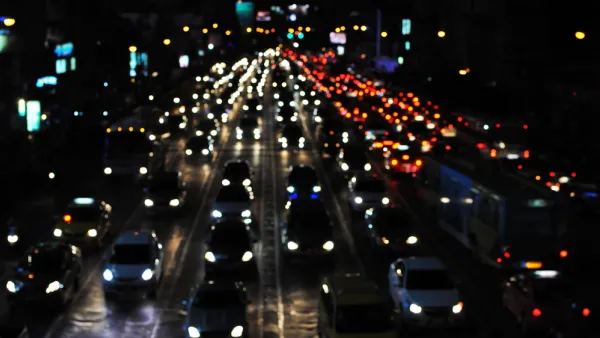At some point, in places all over the country, freeways stopped working as they were intended. What can be done to improve one of the great frustrations of life with a car?

Rick Paulus examines a provocative question at the heart of the contemporary experience: "Highways are created with the purpose of allowing masses to move to distant places in relatively stress-free conditions….There isn't a city in the country that doesn't have some version of a congested stretch like this. So why does a highway go bad? And what can be done to fix it?"
Paulus calls on a series of experts to answer the question. Blair Barnhardt, an expert in pavement management and author of the Book on Better Roads, notes how long it takes to build roads and a particularly scary consequence of that delivery timeline: "By the time of its design, it's already out of date."
The article examines the research of Matthew Turner of the University of Toronto and Gilles Duranton from the University of Pennsylvania who found evidence of induced demand. Or, as Sean Nozzari, deputy district director at Caltrans, puts it: "We can no longer build our way out of congestion."
In the end, Paulus argues in favor of technology-driven solutions like traffic management systems and congestion pricing as the solution for those challenges.
FULL STORY: When a Highway Goes Bad

National Parks Layoffs Will Cause Communities to Lose Billions
Thousands of essential park workers were laid off this week, just before the busy spring break season.

Retro-silient?: America’s First “Eco-burb,” The Woodlands Turns 50
A master-planned community north of Houston offers lessons on green infrastructure and resilient design, but falls short of its founder’s lofty affordability and walkability goals.

Delivering for America Plan Will Downgrade Mail Service in at Least 49.5 Percent of Zip Codes
Republican and Democrat lawmakers criticize the plan for its disproportionate negative impact on rural communities.

Test News Post 1
This is a summary

Test News Headline 46
Test for the image on the front page.

Balancing Bombs and Butterflies: How the National Guard Protects a Rare Species
The National Guard at Fort Indiantown Gap uses GIS technology and land management strategies to balance military training with conservation efforts, ensuring the survival of the rare eastern regal fritillary butterfly.
Urban Design for Planners 1: Software Tools
This six-course series explores essential urban design concepts using open source software and equips planners with the tools they need to participate fully in the urban design process.
Planning for Universal Design
Learn the tools for implementing Universal Design in planning regulations.
EMC Planning Group, Inc.
Planetizen
Planetizen
Mpact (formerly Rail~Volution)
Great Falls Development Authority, Inc.
HUDs Office of Policy Development and Research
NYU Wagner Graduate School of Public Service





























